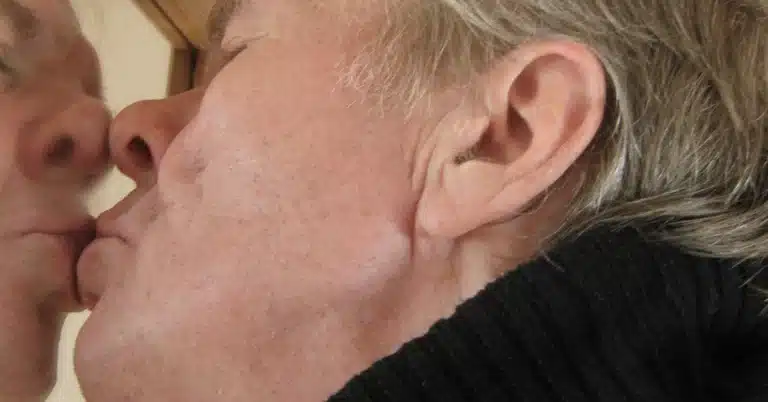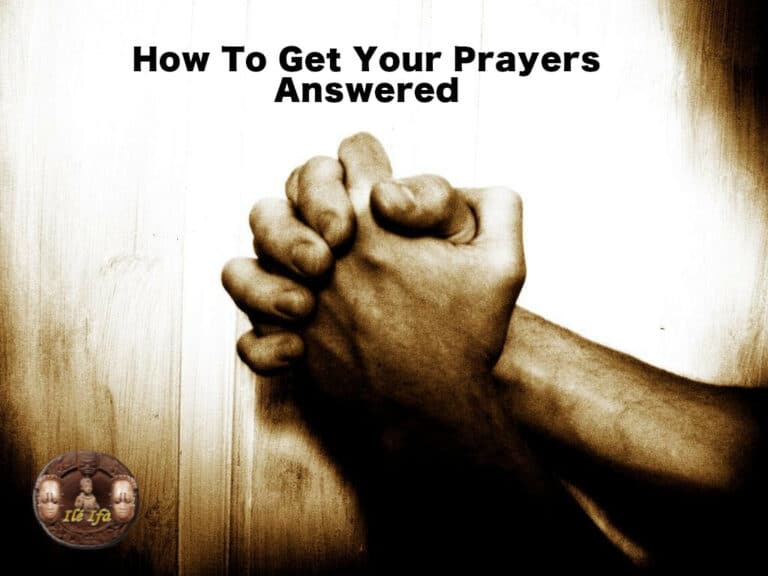Disconnecting from Toxic Relatives is not easy, and navigating the labyrinth of family dynamics is seldom a walk in the park. At the core, the family is a tapestry, interwoven with threads of support and love, but sometimes… those threads tangle with discord and negativity.
Detaching from family… it’s a phrase that conjures a whirlwind of emotions. It’s not about severing bonds mercilessly but rather… about setting sail on a voyage towards personal well-being. This delicate process involves recognition, understanding, and careful action.
Toxic family relationships often wear a deceptive guise. They’re draped in the garb of obligation and normalcy… yet their weight can anchor us down, drowning us in waves of dysfunction. It’s here, in these turbulent waters, that family detachment strategies become lifeboats for our sanity.
The first step is often the heaviest: acknowledgment. Like sifting through an attic cluttered with memorabilia, we must rummage through our feelings to find the burdens we’ve been carrying unknowingly… those that belong to someone else.
Once acknowledged, it’s time for strategies. Detaching from family doesn’t happen overnight. It’s like cultivating a garden; it takes time, effort, and patience to remove the weeds without harming the blooms.
Self-care isn’t selfish; it’s the compass guiding us through these efforts. When we align our actions with our well-being, we’re not deserting others but rather… ensuring we don’t get lost at sea ourselves.
Ultimately, detachment isn’t about creating distance for its own sake but about finding peace. Like a harbor provides refuge for ships after a storm, effective detachment offers respite for our hearts and minds…
…and so begins our exploration into detaching from negative family members—a journey not just of separation but of liberation and peace.
Identifying Toxic Relationships in the Family

The landscape of a family is often as complex as it is comforting… The members of this intimate circle are expected to be our haven, our default supporters. Yet… it’s not uncommon to find the roots of discomfort and unrest right there… within the family fold.
A toxic family member can be akin to a splinter that’s impossible to ignore, yet difficult to extract… They create an environment where stress thrives, and wellness seems like a distant dream. Their presence is a constant reminder… a pattern we’ve come to dread, yet feel compelled to tolerate.
Signs of toxic family members are diverse and insidious… It’s the subtle put-downs masquerading as jokes. It’s the relentless criticism that never seems to abate, no matter the achievements. These signs stretch from overt abuses to the silent treatments that suffocate like invisible smoke.
Negative family dynamics are not just uncomfortable; they are detrimental… The impact on personal well-being is profound. They chip away at our self-esteem… Injecting doubts where confidence once resided. We may find ourselves in an echo chamber of negativity, repeating toxic patterns we swore we’d escape.
The recognition of these patterns is the first step towards change… A moment of realization that, yes, relationships within a family can be poisonous too. It’s acknowledging that sometimes those closest to us are capable of causing the most harm… And that’s neither acceptable nor unavoidable.
But identifying toxic traits requires courage and brutal honesty… It’s easier to turn a blind eye than to confront the source of our discontent. Yet, without this pivotal acknowledgment, we remain shackled in an invisible prison built from familial expectations and misplaced loyalty.
Understanding the nature of these relationships is key… Not all conflicts within families are toxic; some are merely bumps on the road. But when interactions are consistently harmful, when they leave us drained rather than energized… That’s when the red flags wave with urgency.
The influence of these dynamics extends beyond immediate emotional discomfort… It seeps into our professional lives, shaping how we interact with colleagues and peers. It can affect our romantic relationships, often repeating patterns learned within the family walls.
It takes resilience and support to dismantle these negative dynamics… It requires a network—friends, counselors, communities—that validates our experiences rather than dismissing them. Such support systems become lighthouses guiding us through turbulent familial waters.
Empowerment emerges when we learn to set boundaries… When we realize that saying no to a family member is not an act of defiance but an assertion of self-respect. And it’s not selfish to prioritize our well-being; it’s essential for any hope of healthy relational dynamics.
Healing begins when we start rewriting our narrative… Detoxifying these relationships does not mean cutting ties in every case. Sometimes, it means redefining them on terms that don’t compromise our mental and emotional health.
The road toward healthier relationships often involves re-learning how to communicate… It’s about expressing needs without fear, setting clear limits, and not allowing old patterns to dictate new interactions. Through this lens, difficult conversations become opportunities for growth rather than obstacles.
Balance between personal well-being and familial obligations is delicate but attainable… It requires juggling empathy for others with self-compassion. We must acknowledge that while we may share bloodlines with toxic individuals, we don’t have to share their toxic behaviors.
Self-help books and forums provide solace and strategies for those entangled in toxic family dynamics… These resources serve as reminders that we’re not alone in this struggle—that others have navigated these murky waters and emerged stronger.
We find strength in stories of others who have reclaimed their emotional autonomy… In narratives of transformation where individuals have broken free from the shackles of dysfunctional family patterns. Their victories remind us that change isn’t just possible; it’s within reach.
Seeking professional help is not an admission of weakness but an investment in ourselves… Therapy becomes a tool—a compass—that helps us navigate through emotional minefields laid out by years of negative interactions with family members.
Taking actionable steps towards healthier relationships is empowering… Whether it involves establishing new communication protocols or embracing therapy sessions as regular self-care routines. Every small step is a triumph against the tyranny of toxicity.
So as you stand at the crossroads between acquiescence and action… remember this: Your emotional health isn’t just important—it’s essential. Your journey towards healthier familial relationships isn’t selfish—it’s survival.
With every challenge faced comes profound personal growth… Embracing this path won’t be easy or instantaneous, but it will be worth it. For on the other side lies peace, a chance at genuine happiness, and relationships based on mutual respect rather than habitual harm.
In closing, identifying toxic family members and negative dynamics is not about casting blame… It’s about creating space for healing and fostering environments where every member can thrive. You have the power to disrupt harmful patterns—it starts with recognition, followed by decisive action towards well-being.
The Psychology Behind Toxic Family Dynamics

When it comes to family, the word ‘toxic’ can feel like a heavy label… but it’s not about the blame. It’s about understanding… understanding patterns, understanding behaviors, and ultimately, understanding the causes that underpin this toxicity.
Consider for a moment the garden you’ve never tended… Over time, weeds grow, they entangle, and what was once a bed of roses becomes somewhat unrecognizable. It’s similar with family dynamics… They can start out with the best intentions but without care, things can go awry.
Common patterns and behaviors in dysfunctional family units often reveal themselves in subtle ways. It’s the constant criticism disguised as concern… the manipulation framed as love… These are the weeds in the garden. They’re insidious and often go unchecked.
Understanding these patterns requires us to dig deeper, past the surface-level bickering and fault-finding. We need to unearth the root causes… And often, they’re buried deep within our shared histories and personal experiences.
The causes of family toxicity can be diverse. Some stem from generational trauma… passed down like a dark heirloom. Others are born from unresolved conflicts or unhealthy coping mechanisms… Like weeds, they spread if left unaddressed.
Imagine you’re holding a mirror up to your family tree… What do you see reflected back? Are there repeating themes? Neglect, emotional absence, or perhaps overbearing control? These are clues to the psychological landscape you’re navigating.
Families, at their core, are systems… Systems that can malfunction if even one gear isn’t working properly. When we talk about dysfunctional family psychology, we’re essentially talking about a system failure… where individual members struggle to play their roles healthily.
But there’s hope… Like any system, families can be repaired. It takes understanding, yes… but also compassion and courage. It’s about recognizing those dysfunctional patterns without judgment but with a desire to change them.
In your own journey toward healthier relationships, remember this: Change is a process. One that doesn’t happen overnight or by accident. It starts with awareness and is followed by intentional action…
Whether you’re working through these issues solo or with support from therapy or self-help groups, you’re taking control of your narrative. You’re tending to your garden, pulling out those weeds…
Perhaps the most empowering aspect is reclaiming your role in the family system. Not everyone will be ready for change but when one person starts to shift their behavior… it can create ripples.
That shift begins with setting boundaries… Healthy boundaries are like fences that keep out those weeds. They protect your mental health and signal to others that while you value them, you also value yourself.
And when it comes to those around you who may not understand this journey… Empathy is key. They have their own gardens, their own weeds to contend with. Your growth might just inspire theirs…
We don’t choose our families… but we can choose how we interact with them. We can choose to break free from toxic patterns and cultivate something beautiful in their place…
So reflect on what a healthy family dynamic looks like for you. Is it open communication? Mutual respect? Emotional support? Define it for yourself…
As you embark on this path toward healing family relationships… remember that it’s okay to seek guidance. Books, blogs, forums—they’re all resources at your fingertips…
And through it all, be patient with yourself… Healing is not linear; it’s cyclical and often requires us to revisit lessons learned…
In transforming our family dynamics, we transform ourselves… And that transformation has the power to echo through generations to come. Your efforts now may well be the groundwork for a future family garden thriving in harmony and respect…
Because ultimately… it’s not just about pulling out weeds—it’s about planting new seeds—seeds of understanding, kindness, and resilience—creating a legacy of emotional well-being for those who follow in our footsteps…
Setting Healthy Boundaries: The First Step to Detachment

Establishing family boundaries is often like planting a tree. You do it not because you’ll immediately see the fruit but because you know the shade and respite it’ll offer one day… And let’s face it, too many family gatherings feel more like sitting in the scorching sun than relaxing under a lush canopy.
Communicating boundaries isn’t just about speaking up; it’s an art… An art that intertwines assertiveness with empathy, clarity with kindness. It’s more than just saying “I can’t do this”; it’s illustrating your “why,” drawing a map of your emotional landscape for others to understand.
When you begin to set these boundaries, remember… Not everyone will greet them with applause. Some may react as if you’ve rewritten the rules of a game they thought they were winning. This resistance can be the crucible for your resolve.
Dealing with family resistance is like navigating a river – sometimes, you need to paddle against the current. You’ll need a compass of conviction and the oars of resilience. Because let’s be real, standing your ground can feel like you’re speaking a foreign language at first.
But why is establishing boundaries so crucial? Think of your life as a garden… Without fences, anything can trample through, leaving you with trampled flowers instead of blossoms. Boundaries are those fences – they protect, define, and allow for growth.
Communicating boundaries is not about issuing ultimatums; it’s about inviting conversation. It’s saying, “Here’s where I stand,” with an open hand rather than a closed fist… Offering an opportunity for understanding, rather than demanding compliance.
Dealing with resistance is where many retreat. The secret? Expect it. Anticipate the pushback and prepare your responses like an actor rehearses their lines… With each interaction, your delivery becomes more confident, more convincing.
Remember, when establishing family boundaries, think less about erecting walls and more about drawing lines in the sand… Clear enough to be seen, yet flexible enough to shift as tides of relationships change and evolve.
Communicating boundaries effectively often means sharing more “I feel” than “you did” statements… It invites introspection rather than accusation. This language allows others to see your point without feeling cornered.
And yes, dealing with family resistance can sometimes feel like treading water… But every effort to float is also teaching you how to swim. Over time, persistence in this endeavor can transform even the most turbulent waters into something navigable.
Here’s a truth: Establishing boundaries is not just for them; it’s for you. It’s giving yourself permission to prioritize self-care over self-sacrifice… To recognize that saying ‘no’ to others can mean saying ‘yes’ to your well-being.
In communicating boundaries, there’s power in simplicity… A clear, concise message cuts through noise better than a lengthy explanation. It’s not the volume of words but the weight of them that anchors understanding.
Facing resistance from family members is akin to weathering storms… As they rage, remember – even the mightiest oak bends in the gale but doesn’t break. Your resolve will be tested; yet through resilience, your roots only grow deeper.
Establishing family boundaries is ultimately an act of hope… It’s believing that space can bring people closer rather than push them away… That respect for personal limits can foster stronger ties in the long run.
Communicating boundaries necessitates repetition… Like waves reshaping the shoreline, each conversation has the potential to gradually redefine understandings and expectations. Patience here is as vital as persistence.
Dealing with resistance is often a mirror reflecting their fears and insecurities back at them… Recognize this and address those fears rather than only defending your stance. Herein lies the bridge between confrontation and dialogue.
In closing, establishing family boundaries is about creating a legacy… A legacy of respect, autonomy, and mutual understanding that will outlive any temporary discomfort. Like any journey worth taking, it begins with that first step – a step towards detachment and ultimately towards peace.
Effective Communication Strategies

When we find ourselves in the middle of a conversation with a family member where the air gets thick with tension… it’s like walking through a minefield with a blindfold. You want to get to the other side, to convey your thoughts without causing an explosion. It starts with the right tools in your belt… assertive communication techniques are just that.
Assertiveness isn’t about winning the argument or getting the last word… It’s about respect. Respecting your own thoughts and feelings while giving due reverence to others’. Imagine it as a balancing act where you’re walking on a tightrope between aggression and passivity…
Tips for Assertive and Empathetic Communication
The art of communication is much like painting, every stroke and color choice matters… As you speak your truth, it’s equally crucial to mix empathy into your palette. This blend of understanding and clarity can transform a potentially volatile conversation into an opportunity for growth.
Firstly, it’s key to understand what assertiveness isn’t… It’s not about being loud or forceful; that’s aggression in disguise. It’s that sweet spot where your words are firm yet gentle, like a skilled gardener pruning a rose bush—careful not to cut too deep to keep the beauty intact.
Secondly, listen… Listen not just to reply but to understand. There’s wisdom in those pauses between sentences where you let their words sink in. This act alone can defuse many tensions, akin to releasing pressure from an over-inflated balloon, carefully and deliberately.
Navigating Difficult Conversations with Family Members
Addressing toxic behavior within the family requires finesse… Picture it as navigating a labyrinth; every turn is deliberate, avoiding dead-ends of past mistakes. It’s about forging a new path.
Before engaging, take a moment to center yourself. Breathe deeply, like drawing back the string of a bow… Your words will be the arrow, so aim with intention. Clear your mind of past grievances; this is about the here and now.
When broaching sensitive topics… Keep ‘I’ statements in your quiver. These are arrows that hit their mark without wounding. By framing your concerns around your feelings rather than their actions, you avoid putting them on the defensive—a powerful tactic in maintaining peace.
In these moments, body language speaks volumes… Maintain open posture, eye contact that says ‘I see you’, and nods that whisper ‘I hear you’. These silent affirmations can soothe frayed nerves like balm on chapped skin.
Remember to keep emotions in check. They’re wild horses that can easily bolt… Reign them in with self-control. This doesn’t mean suppressing feelings but rather channeling them constructively through the calm tenor of your voice.
And when tempers flare despite best efforts… take a step back. Not every silence needs filling nor every battle fighting. Sometimes stepping back is the way forward, granting space for reflection like the quiet after a storm.
Family Conflict Resolution
Conflict within family walls is as old as time itself… Yet each generation has the chance to repaint those walls with more harmonious hues.
Establish boundaries like setting up invisible fences; they protect both you and them from unintended harm. Make these boundaries clear but flexible—rigid fences can break while those that sway survive storms.
In negotiations, seek win-win scenarios. When solutions benefit all parties, they plant seeds for long-term peace rather than short-lived truces…
At times though, there will be impasses. That’s when external help can shine light into corners we couldn’t illuminate ourselves—therapists or mediators become lanterns guiding us out of darkness.
Self-Care and Emotional Resilience

The dance of detachment… When we find ourselves entwined in the chaotic waltz of toxic relationships, the music seems never-ending. Self-care becomes the silent rhythm that can guide us out of the ballroom…
…Toxic ties often bind us with invisible threads, threads soaked in duty, love, and, paradoxically, pain. Detaching, then, isn’t a sign of weakness but a courageous step towards self-preservation…
…It’s like weaving your own safety net while free-falling. And it’s not just about bubble baths and candles—though they can be delightful—it’s about setting boundaries that guard your emotional well-being…
…Emotional resilience is akin to an internal compass; it helps navigate through the storm without losing sight of one’s true north. It’s born out of self-awareness and nurtured through deliberate self-care…
…Picture this: stress as a persistent shadow, looming large over every family gathering, every phone call. Techniques for managing this shadow are not just tools; they’re lifelines…
…Breathing exercises don’t just fill the lungs; they oxygenate your peace of mind. Mindfulness isn’t merely a trend; it’s an anchor in turbulent seas…
…Journaling—often dismissed as teenage melancholy—is actually a powerful form of self-dialogue. It’s whispering to oneself in a world that never lowers its voice…
…Physical exercise is frequently recommended by health gurus for good reason. It isn’t merely about sculpting bodies but tempering minds…
…Artistic expression has the subtle power to unlock emotions caged by familial discord. It’s not mere distraction; it’s translation of feelings into forms…
…Social support networks offer more than just companionship. They remind us that our stories are part of a larger narrative, that we’re not alone on this journey…
…Boundaries are not barriers but bridges to healthier interactions. They’re not built to keep everyone out but to invite the right kind of connections in…
…Self-compassion might sound indulgent to some, but it’s actually the bedrock of resilience. It’s not coddling; it’s recognizing one’s own worth amid external chaos…
…Understanding emotional triggers is like being an archaeologist in your own psyche; you unearth patterns so as not to be buried by them…
…Forgiveness, especially self-forgiveness, is often underrated in its power to liberate. It doesn’t change the past; it enlarges the future…
…Cultivating hobbies is more than passing time; it’s carving out space for joy in a crowded emotional landscape…
…Nutrition and sleep aren’t just physical necessities; they’re foundational to mental fortitude. They don’t just fuel the body; they recharge the spirit…
…Professional help isn’t an admission of defeat; it’s enlisting an ally in your quest for serenity. It’s not about fixing what’s broken; it’s about fortifying what’s strong…
…And as you stand on the brink of change, remember that emotional resilience isn’t just bouncing back. It’s about learning to bounce forward…
This journey you’re on isn’t simply about surviving family stress. It’s about thriving despite it.
Because at the end of the day, self-care in toxic relationships isn’t selfish…
…it’s absolutely essential.
Building a Support System Outside the Family

Navigating family dynamics is akin to walking through a labyrinth… You may know there’s an exit, but the twists and turns can be disorienting. It’s in these moments when an external support system becomes not just helpful, but necessary…
Finding and leveraging external support. It’s not just about stepping outside the circle—it’s about crafting a new one. People often don’t realize the power of perspective until they step out of their own story to hear someone else’s… Therapy and support groups, for example, offer mirrors and windows—mirrors that reflect our own experiences back to us, and windows into new strategies for coping and relating.
The role of therapy is multifold… A therapist can be a guide, a sounding board, or sometimes just a witness to your journey. They provide the tools to build resilience and the scaffolding to support personal growth… In a world where family issues often get swept under the rug, therapy can be the space where the broom is put away, and the dust is truly examined.
Support groups bring together individuals sharing similar battles… There’s strength in numbers, in shared stories that weave together to create a tapestry of understanding. These groups become more than just meetings; they transform into communities that nurture growth from shared soil… They offer the warmth of companionship with the strength of collective wisdom.
Let’s talk about leveraging these supports effectively… It’s about being selective and finding what resonates with you. Each person’s story is unique, so what works for one may not work for another. Yet, in this individual journey, there’s comfort in collective wisdom—a paradox that beautifully unfolds in support groups.
And remember, seeking external support isn’t an act of betrayal towards your family… It’s an act of self-preservation. It’s acknowledging that healing often requires more than what lies within your immediate environment… It’s understanding that sometimes, the roots need soil from elsewhere to truly flourish.
What if you could find a haven where judgment is left at the door? That’s what these spaces provide—a neutral ground where the currency is empathy and validation… Where the focus shifts from enduring to understanding, from surviving to thriving.
Building a support system outside of one’s family may seem daunting at first glance… But it’s like planting a seed. It needs time, it needs nurturing, but most importantly, it needs external elements—sunlight, water, soil—to grow. Think of therapy and support groups as these essential elements…
Therapy provides sunlight—the clarity needed to see through personal fog… And just like sunlight does not judge which plant to shine upon, therapy illuminates without judgment. Then there are support groups; they are like water—essential for growth and providing relief when you feel parched by familial challenges.
But let’s not forget soil—the foundation. The right environment is crucial for any form of growth… Your external support system is that soil—rich with experience, nutrients in the form of advice and compassion, fostering strong roots in self-awareness and resilience.
Sometimes it takes an outsider to help us look inward… A guide who isn’t tangled up in our familial tapestry can often find the loose thread we’ve been searching for all along. Therapy offers this objective guidance—a chance to untangle knots without fear or favor.
In support groups, you will find solidarity… A collective nod when you share your story because each head around you understands all too well. It’s here where shared battles lead to shared victories—a community where your fight becomes everyone’s fight.
These spaces—be they therapy rooms or group gatherings—are like incubators for personal development… Here you are safe to hatch new ideas about yourself and your relationships without the risk of predation by past patterns or toxic dynamics.
Embrace vulnerability as your strength in these settings… It’s tempting to wear armor built from years of familial strain but lay it down. In this space, vulnerability breeds connection and healing—not further wounding.
External supports are lighthouses guiding ships through stormy familial seas… They stand firm on the shoreline—a beacon signaling safe passage towards healthier relational shores. This journey requires courage—the courage to seek out these lighthouses and trust in their guidance.
This isn’t about replacing family; it’s about complementing what’s missing… Consider each therapy session or group meeting as a piece of a puzzle you’re completing—not a piece you’re replacing. These pieces come together to offer a fuller picture of who you are beyond familial definitions.
Assembling a support system outside your family is an investment in your well-being… Like any good investment, it accrays dividends over time—dividends paid in emotional stability, insightfulness, and stronger interpersonal skills.
In essence, while our families can be integral parts of our lives, our stories are not solely authored by them… By seeking external supports through therapy and family support groups, we take hold of the pen—we become co-authors ready to write chapters that resonate with who we truly are.
So begin this journey with intentionality and hope… Know that on the other side lies a community ready to hold space for you as you explore uncharted emotional territories. Your pursuit of healing doesn’t diminish family—it enriches your role within it through newfound wisdom and grace.
Remember: Seeking help is courageous; it’s transformative… And within every act of reaching out lies the potential for profound change. Therapy and support groups aren’t mere escapes from family issues—they are bridges toward a self-empowered life amidst them.
May this path lead you not only towards personal serenity but towards enriching the very fabric of all your relationships… Let each step forward be one more stride towards harmony—within your family and within yourself.
Dealing with Guilt and Emotional Conflict

It’s a familiar crossroad… The point where personal needs intersect with family expectations, each demanding your allegiance, your time, your very sense of self.
The tension is palpable…
On one hand lies the path of self-care and personal growth; on the other, the well-trodden road of familial duty and the weight of legacy. The question, then, isn’t just about choice, but about balance… And guilt? Guilt is the uninvited companion on this journey, whispering doubts into every step away from tradition.
Overcoming guilt in family detachment…
It’s like trying to silence a chorus that’s been harmonizing since childhood. This guilt has roots. It thrives on “shoulds” and “oughts,” fed by generations of expectations. But here’s the thing: guilt is also a signal—a signal that we’re pushing against boundaries that may no longer serve us.
Emotional conflict with family…
It’s more than just a disagreement over Sunday dinner plans. It’s the deep-seated struggle between who we are and who we’re expected to be. A tangle of love, obligation, and often, a history of communication that might lack the nuance of understanding personal space.
The balancing act…
We all strive for it—balancing personal needs with family expectations. But imagine if this act wasn’t on a tightrope but within a vast field, where there’s room for everyone’s needs to coexist without constant peril of falling.
The truth is…
Our sense of responsibility towards our families often comes intertwined with an unspoken rule that their happiness trumps our own. But whose script are we reading from? There’s power in authoring your own narrative—one where your well-being has a leading role.
Detachment isn’t a cold severing…
It’s an art. A careful calibration of distance that allows for growth without the loss of connection. It’s finding enough space to dance to your own rhythm while still being part of the ensemble.
Guilt might tell you it’s selfish…
But there is profound generosity in tending to your mental garden. Healthy plants provide better shade, more robust fruit—nourishment for not just oneself but for those who gather round.
Recognize this…
Detachment doesn’t mean you care less; it means you care smarter. It means building relationships that are sustainable, not out of duty but out of genuine connection and mutual respect.
And yes…
The journey will involve some uncomfortable conversations. Some moments of doubt where guilt and old tapes play loud. But amidst those echoes lies the opportunity to create something new—a chance to redefine what family can mean.
Remember…
You are not alone in feeling torn. The same technology that can widen the gulf between us also builds bridges—forums, blogs, digital campfires where others share their maps and compasses for this very terrain.
Acknowledge your feelings…
They’re as real as the keyboard beneath your fingertips or the phone in your hand. By acknowledging them, you’re taking the first step toward resolution and peace.
Find support…
In therapists who can help untangle emotions, in books that offer different perspectives, in communities online or offline where open hearts mirror your own struggles and triumphs.
Give yourself permission…
To redraw lines where necessary, to establish new patterns that foster health rather than hinder it. To cultivate a life where guilt is a visitor, perhaps, but never a permanent resident.
And when it comes to family expectations…
Consider this: expectations are simply beliefs about what should happen. They are not laws of nature or decrees from on high.
Creating change…
Will not come easy; patterns are comfortable because they are known. But comfort and health are not synonyms; sometimes what feels safe is merely familiar territory marked by old battles and scars.
Define what matters to you…
Values you cherish; they can guide you when the noise outside grows too loud. These values can be lighthouses in the fog—unmoving beacons signaling which way is home.
Embrace empathy…
For yourself and those around you; change is hard on everyone involved. Empathy doesn’t erase boundaries; it reinforces them with kindness instead of resentment.
And finally…
As you navigate these waters—sometimes choppy, sometimes calm—remember that every step forward is part of a larger journey towards well-being…
Towards a place where guilt no longer governs and emotional conflict finds resolution in the balance we so earnestly seek.
Limiting or Cutting Off Contact: Making the Hard Decisions

Sometimes, the only way to find serenity is to create space… It’s not about giving up on someone, but rather about self-preservation. You’ve likely realized that reducing or ending contact with a family member isn’t an easy choice… It’s nuanced, fraught with emotion, and the path less trodden.
But consider this: self-care isn’t selfish; it’s necessary. When interactions turn toxic, they become not just a nuisance but a detriment to your well-being… Ending relationships with family, therefore, becomes an act of courage.
When to Reduce Contact
The decision often comes down to consistent patterns, not one-off events… Toxic behavior that is continuous and harmful to your emotional health is a clear sign. When you feel depleted after every encounter or find yourself dreading interactions, these are more than just red flags…
They signal a need for boundaries or even distance. Think about it—not all investments yield positive returns. Sometimes the cost to your mental health far outweighs any perceived familial obligation…
How to Approach Detachment
Embarking on this journey requires tact and clarity. Start with setting boundaries… Communicate them clearly and without apology. Remember that your right to mental peace is non-negotiable.
But if boundaries fail and the toxicity persists? Cutting off contact may be the only viable solution. It’s not about drama; it’s about drawing a line in the sand… And sometimes, walking away from the shoreline altogether.
Legal and Ethical Considerations
In extreme cases, you may need more than emotional distance. Sometimes legal intervention becomes a necessity, especially when safety is at risk… This could mean restraining orders or other legal protections.
The ethical side can be trickier… It’s muddled with societal expectations and personal guilt. Yet, ethics also include your responsibility towards your own life. Balancing these considerations requires thoughtfulness and often professional counsel…
Consequences of Family Detachment
Let’s face it—there will be consequences. You might face judgement or misunderstanding from others… They’ll see the situation through their lens, not yours. But here’s the thing: they’re not walking in your shoes.
You may also wrestle with guilt. It’s natural but remember, you’re not responsible for someone else’s behavior… Only how you respond to it.
Maintaining Your Decision
Once you’ve made your choice, stay firm. People might push back or test your boundaries… They may promise change. Hope can be persuasive but remember past patterns—they’re the best predictor of future behavior.
And if doubt creeps in? Remind yourself why you made this choice. Revisit those reasons like a mantra if you must…
Support Systems Are Key
It’s essential not to go at this alone… Find support groups, seek out therapy or confide in trusted friends. Sharing your journey can bring validation and strength.
These systems offer an echo when you need to hear your voice again… They provide a reflection when your resolve begins to waver.
Living with Your Decision
Life after detachment can feel disorienting at first. There might be a void where chaos used to be… But in time, serenity fills that space.
You’ll find that life moves forward—sometimes in beautiful and unexpected ways. New relationships form… Old ones might even heal from a distance.
Reducing family contact or ending relationships is a profound decision—never taken lightly. It demands courage, reflection, and sometimes a legal standpoint…
But remember this: it’s also about choosing the quality of life over constant conflict. It’s about thriving, not just surviving—and isn’t that what we all deserve?
And so we find ourselves at a crossroads between obligation and self-care… The decision isn’t easy but necessary for some. The road less traveled is often the one that leads to peace—your peace—and perhaps that makes all the difference.
Navigating Family Gatherings and Public Events

Family events… They can be the bedrock of cherished memories, a tapestry woven with laughter and shared stories… Or they can morph into battlegrounds, especially for those who’ve dared to redraw boundaries with toxic family patterns. It’s not merely about showing up; it’s about strategic attendance.
Strategies for handling family events post-detachment… It sounds clinical, but detachment can be a survival mechanism, an act of self-preservation. It’s akin to pruning a tree; sometimes, to flourish, we need to cut away the parts that threaten the whole. Handling these events then becomes a delicate dance…
Coping with questions and reactions from other relatives… Oh, the minefield of probing queries and the furrowed brows! You’ve made a choice for your well-being, and yet here’s the gauntlet – relatives who might not understand your journey. They ask because they care, or perhaps because they simply don’t know what else to say.
Handling family events… It requires a blend of diplomacy and authenticity. Prepare responses that honor your truth without igniting unnecessary conflict. It’s an art form, redirecting conversations like a skilled conductor, ensuring the music plays on smoothly even when the notes become challenging.
Coping with family gatherings… This is where emotional agility takes center stage. Allow yourself to experience the range of emotions but control which ones you let into the spotlight. Empathy can be your ally here; understanding others’ perspectives can diffuse tension even if you don’t agree with them.
Dealing with relatives… requires us to navigate their expectations and our own boundaries. It’s an intricate waltz between respecting their feelings and standing firm in your own space. Your emotional choreography can either lead to a harmonious ensemble or a tangled mess of steps.
Handling family events post-detachment… becomes a measure of your growth. Each interaction is a test of your resolve, a confirmation that while families are the starting point of our narratives, they don’t have to be the sole authors of our stories.
Coping with questions and reactions from other relatives… becomes easier when you realize it’s not about convincing them of your choices, but rather about conveying respect for their concern. It’s the quiet confidence that comes from knowing you’re navigating these waters with purpose.
In handling family events, there’s often an unspoken expectation – to revert to old roles, to pretend all is well for the sake of appearance. Resist this urge. Authenticity doesn’t mean confrontation; it means being true in your interactions without compromising your progress.
Coping with family gatherings… sometimes means choosing which battles are worth engaging in. Not every provocation deserves your reaction; not every misunderstanding requires clarification. Sometimes silence is a powerful statement all on its own.
Dealing with relatives… They’re like mirrors reflecting parts of ourselves we’ve outgrown or are still wrestling with. These reflections aren’t always flattering, but they do provide insight – if we choose to see it – into where we’ve been and where we’re headed.
Handling family events post-detachment involves grace – the kind that says “I’m here in my new capacity.” You’ve evolved; let that evolution be gentle yet evident in how you carry yourself amidst those who have known you longest.
Coping with questions and reactions from other relatives may prompt introspection… What part of their inquiries come from a place of love? What portion stems from discomfort with change? Discerning this can guide your interactions towards more compassionate exchanges.
In handling family events, there’s no one-size-fits-all blueprint for success. What works for one may not resonate with another because each family is its own unique ecosystem. But principles of respect and self-care tend to be universal cornerstones in any approach you take.
Coping with family gatherings is also about preparation… Think ahead about potential triggers and plan out coping mechanisms. Maybe it’s a discreet timeout signal with a trusted cousin or an excuse ready for why you must leave early if things become too much.
Dealing with relatives means acknowledging their significance in your life without allowing them undue influence over your emotional state. Remember, you’re steering this ship now; others may offer directions, but ultimately you choose the course.
Handling family events post-detachment isn’t just about surviving the day – it’s also seizing opportunities to create new patterns and traditions that align more closely with who you are today.
Coping with questions and reactions from other relatives… Treat it as an exercise in setting gentle but firm boundaries, as much for their understanding as for your peace of mind. It’s teaching through action what lines are no longer crossable.
Handling family events can sometimes feel like walking through a familiar forest where the paths have shifted overnight. With time and patience though, navigating these altered landscapes becomes second nature; trust in your internal compass.
Coping with family gatherings means sometimes being okay with standing apart from the crowd. There’s strength in solitude when it’s chosen purposefully; it’s okay to seek out pockets of quiet amidst the noise.
Dealing with relatives after establishing new boundaries is subtle work… Like sculpting – chipping away gradually at old dynamics while shaping healthier forms of connection. The end result isn’t always predictable but often rewarding in its authenticity.
The journey through handling family events post-detachment is unique for everyone, yet there’s comfort in knowing others walk similar paths… Exchange stories, offer support – community fosters courage amidst individual quests for tranquility within familial ties.
Remember, coping with questions and reactions from other relatives doesn’t mean shouldering it all alone… Finding allies within your circle who respect and understand your choices can make all the difference in weathering these social storms together.
Ultimately, handling family events boils down to managing expectations – both yours and theirs… Lowering these can be liberating; sometimes merely aiming for neutral ground rather than warm conviviality is enough…
And so as you navigate these gatherings, keep one eye on the horizon where calmer seas await… Each event survived not only builds resilience but charts a course closer toward those peaceful waters where familial bonds are buoyed by mutual respect rather than obligation…
Navigating Family Gatherings and Public Events isn’t just about enduring… It’s about thriving on your terms within an ecosystem that’s evolving just as you are – one gathering at a time.
Long-Term Strategies for Healing and Moving Forward

Fostering Personal Growth and Healing Post-Detachment
It starts with a realization, an uncomfortable one… That the family unit we trusted as a bastion of unconditional support might not be serving our well-being anymore. The path to detachment isn’t laced with roses; rather, it’s often a thorny journey that requires us to muster up courage we didn’t know we had…
But let’s take a moment here. Healing from family detachment is akin to tending a garden that’s been through a storm. It doesn’t happen overnight. Yet, it begins with nurturing the soil—the self—till it’s fertile enough for new growth…
It’s about crafting a narrative that honors our past but doesn’t chain us to it. We dive into introspection, learning from the cacophony of dysfunctional patterns, yet focusing on the melody of personal growth that can emerge from it…
And therapy… Therapy can be that impartial sounding board, reflecting back to us the notes of our own thoughts, helping us compose a new tune. It’s not just about unloading our burdens; it’s also about relearning how to carry them, or better yet, how to lay them down…
The community becomes critical here. Whether it’s an online forum or a local self-help group, these spaces can serve as echoes of validation and understanding, guiding us through the mist of change…
Building and Maintaining Healthy Relationships in the Future
We’ve planted the seeds; now let’s talk about cultivating relationships that flourish. Relationships after all are not static entities; they’re dynamic, requiring ongoing attention and care…
Setting boundaries… Now that’s a skill as vital as breathing in the art of building healthy relationships. It’s the fence around our garden that allows us to invite people in, while still protecting our newly planted seeds from being trampled on…
Communication is our sunlight, fostering transparency and trust. It’s about expressing needs and expectations clearly, without letting old patterns cloud the sky…
Flexibility is also key… because let’s face it, there are no perfect relationships. They evolve, they shift, they surprise us. Being adaptable in the face of change ensures our relational garden doesn’t wither under the weight of rigid expectations…
Emotional intelligence blossoms as we learn from each encounter. It allows us to understand not only what we feel but also why we feel it. And this understanding becomes our compass in navigating future relationships…
And when conflict arises—as it inevitably will—we approach it not as a battle to be won but as an opportunity for growth. We learn the art of disagreement without disrespect, fostering resilience within these connections…
The path isn’t just about avoiding toxic relationships—it’s about recognizing and nurturing connections that encourage mutual growth… And always remembering that healthy relationships are not found; they’re built and maintained through patience, effort, and a commitment to personal well-being.
In conclusion… whether we’re tending to personal healing or nurturing new relationships, it requires a gardener’s touch—patience, care, and the belief that from even the roughest soil can bloom something beautiful…
Conclusion and Additional Resources
Detaching from family… it’s akin to repainting a room in your home. It’s about changing the atmosphere, embracing a new hue that better suits the person you are today… or aspire to be tomorrow. Detaching isn’t synonymous with abandonment; it’s often an act of self-preservation…
In this journey of detachment, remember, you’re not alone. A plethora of resources stands ready to guide you… to lend support when the weight seems too much to bear alone. Books, therapists, support groups… they’re the scaffolding as you renovate the familial structures in your life.
Key Takeaways:
- Detachment is a form of self-care… an effort to prioritize your well-being.
- It’s crucial to establish boundaries that safeguard your emotional health.
- Seeking external support can provide fresh perspectives and coping strategies.
Resources for Family Detachment:
Books can be the silent friends that guide us through tumultuous times. Consider works like “Boundaries” by Dr. Henry Cloud and Dr. John Townsend or “Toxic Parents” by Dr. Susan Forward… These books serve as roadmaps on your journey.
Support groups offer solidarity, a sense of belonging among those who traverse similar paths. Websites like Psychology Today can help locate local or online groups where experiences and coping mechanisms are shared.
Professional Help for Family Issues:
Sometimes, a navigator is essential. A licensed therapist or counselor understands the complexities of family systems… They provide tools to maintain emotional balance while you redefine these relationships.
Remember… seeking help isn’t a mark of weakness, but a bold step towards empowerment. Platforms like BetterHelp or Talkspace offer therapy from the comfort of your own home, tailored to fit into the rhythms of your life.
Embrace this process with grace for yourself and others… It’s not just about detaching from what no longer serves you—it’s about stepping into a space where you can flourish. Consider each resource a thread in the larger tapestry of your journey towards healing and growth…
For those ready to take that next step, professional help is just a conversation away. It’s about writing a narrative that honors your needs and narratives, fostering healthier relationships on your terms…
Embarking on this path is brave. And in this bravery, there’s an undeniable strength that paves the way for a future where you can breathe… live… and thrive with peace and autonomy.






